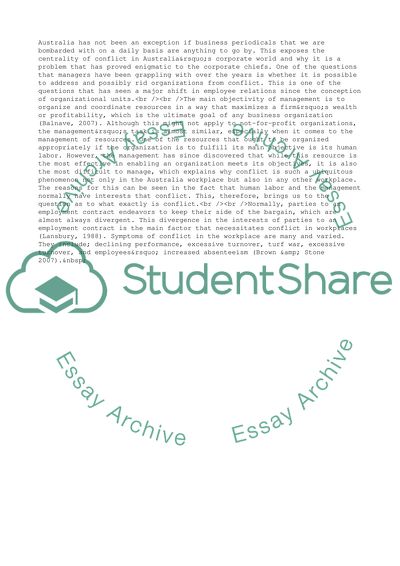Cite this document
(How Do the Traditional Theories of Employment Relations Help Us to Coursework Example | Topics and Well Written Essays - 2000 words, n.d.)
How Do the Traditional Theories of Employment Relations Help Us to Coursework Example | Topics and Well Written Essays - 2000 words. https://studentshare.org/management/1773939-to-what-extent-and-how-do-the-traditional-theories-of-employment-relations-help-us-to-understand-conflict-in-the-modern-australian-workforce
How Do the Traditional Theories of Employment Relations Help Us to Coursework Example | Topics and Well Written Essays - 2000 words. https://studentshare.org/management/1773939-to-what-extent-and-how-do-the-traditional-theories-of-employment-relations-help-us-to-understand-conflict-in-the-modern-australian-workforce
(How Do the Traditional Theories of Employment Relations Help Us to Coursework Example | Topics and Well Written Essays - 2000 Words)
How Do the Traditional Theories of Employment Relations Help Us to Coursework Example | Topics and Well Written Essays - 2000 Words. https://studentshare.org/management/1773939-to-what-extent-and-how-do-the-traditional-theories-of-employment-relations-help-us-to-understand-conflict-in-the-modern-australian-workforce.
How Do the Traditional Theories of Employment Relations Help Us to Coursework Example | Topics and Well Written Essays - 2000 Words. https://studentshare.org/management/1773939-to-what-extent-and-how-do-the-traditional-theories-of-employment-relations-help-us-to-understand-conflict-in-the-modern-australian-workforce.
“How Do the Traditional Theories of Employment Relations Help Us to Coursework Example | Topics and Well Written Essays - 2000 Words”. https://studentshare.org/management/1773939-to-what-extent-and-how-do-the-traditional-theories-of-employment-relations-help-us-to-understand-conflict-in-the-modern-australian-workforce.


